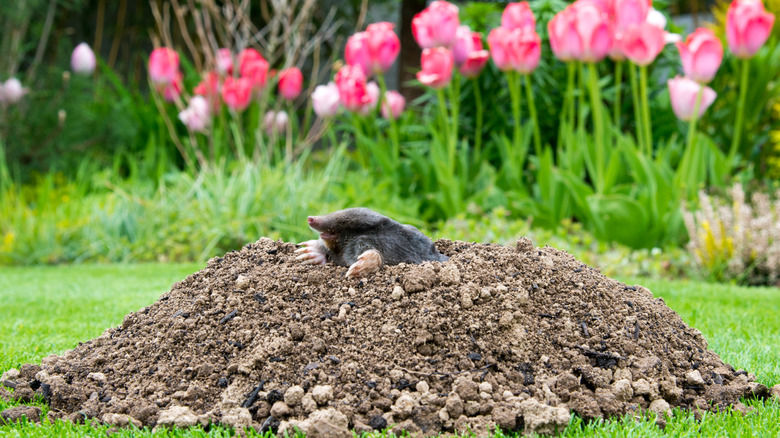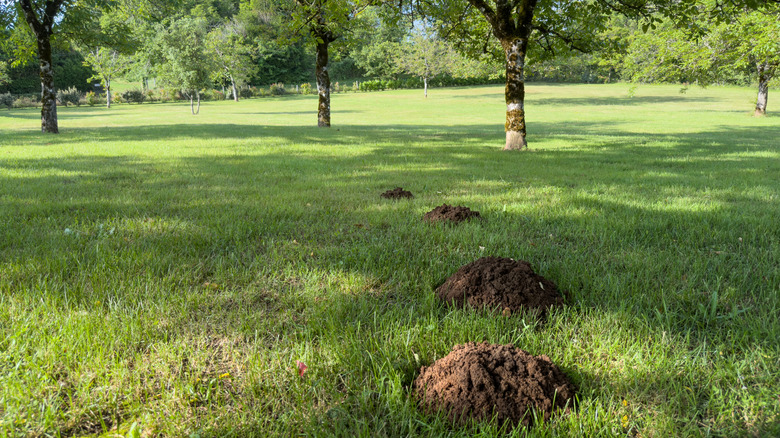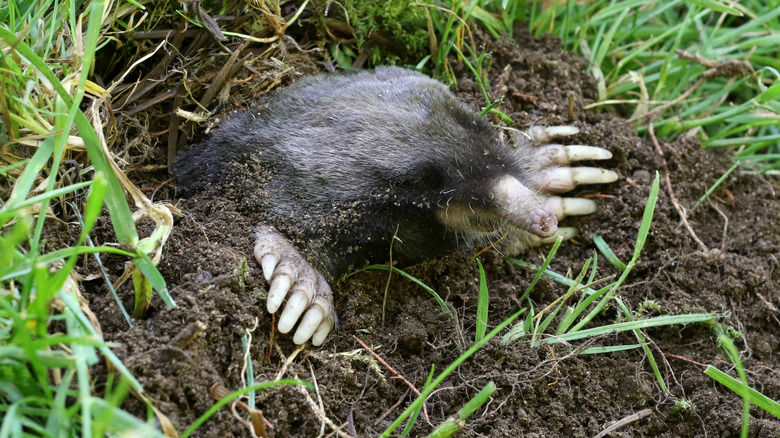How To Repair Mole Damage On Your Lawn (And Tips To Keep Them From Coming Back)
We may receive a commission on purchases made from links.
Moles may be small, but they cause big damage to your lawn. These underground rodents can dig 100 feet of tunnel in a single day, creating unsightly veins across your yard. As they come to the surface, molehills form, pock-marking your once-green lawn with piles of brown soil. Moles do more than just affect the appearance of your lawn, however — causing irreparable, and often costly, damage. They also pose a safety issue for homeowners and their pets, with uneven ground and sinkholes causing a tripping hazard.
The most obvious giveaways to the presence of moles are raised ridges lining your yard and the appearance of volcano-like hills. You may also notice that the ground feels soft underfoot, or feel an alarming sinking sensation when walking over certain areas. Gophers and voles are pests that cause similar lawn damage, but it looks slightly different. Gophers are larger and their hills can be up to a foot tall. Unlike moles, a gopher's hill will be plugged to deter intruders and they don't leave visible tunnels. Voles are smaller, resembling field mice. They leave shallow tunnels or ditches along the surface, and create golf-ball sized holes rather than raised hills.
If you have moles damaging your yard, act quickly. Make sure they are completely gone before repairing your yard, or you'll have to repeat the process. You can repair mole damage by evening out your lawn, filling in holes, and replanting grass in bald spots.
Helpful strategies for mole-damage repair
Before fixing your lawn, you need to make sure the mole is no longer active. Do this by shoveling away the molehills and lightly raking any exposed areas, then wait a day or two to see if new ones surface. If the mole is gone, even out your lawn with a Goplus lawn roller, which can be filled with sand or water. It needs to be heavy enough to flatten the mole hills without leaving air pockets. Fill any deep divots you come across with topsoil. When you are done, examine your lawn for bare spots and reseed grass as necessary.
To reseed grass, add seed at the proper rate for your area and grass type. Compact the seed into the soil and keep the area moist until germination, typically one to two weeks. To add extra nutrients, fertilize with Scotts Turf Builder starter fertilizer. Water new grass once a day until it is long enough for mowing. If this sounds too overwhelming, you can hire a lawn care company that offers aeration and overseeding services.
How to remove and deter moles
You can get rid of moles humanely with castor oil, such as Baar MolEvict lawn mole and vole repellent. Castor oil is not fatal to moles, but it will upset their stomachs and ruin the taste of food, causing them to leave. Mix three parts castor oil and one part dish soap and use 4 tablespoons per gallon of water. Spray along tunnels and soak mole hill entrances. Trapping is the quickest and most effective means of mole removal; however, releasing moles in a separate location is illegal in many states, which means you must either euthanize the animal or release it within 100 feet of where it was trapped.
To deter future pests, you can use options like Motomco mole killer worms, but these may not be safe for wildlife. Alternatively, you can install solar-powered mole repellent stakes in your yard, which emit low-frequency waves and repel not only moles, but also voles, gophers, shrews, and other rodents. For a colorful option, you can plant daffodils, allium, and marigolds, since moles may hate the smell.


